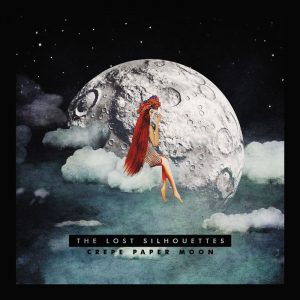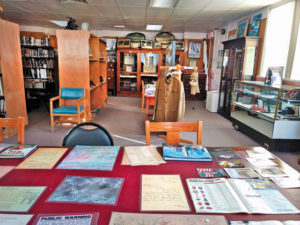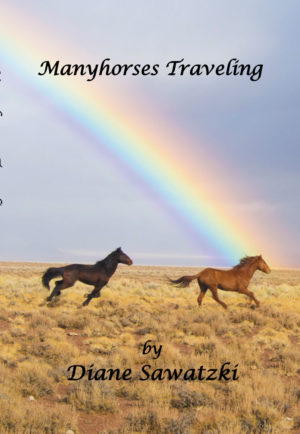By George Sibley
In the beginning all the world was America … – John Locke, 1689
That these United States are not very united today seems obvious.
We’ve seen the red and blue map from the 2016 election: the blue urban islands that concentrate four fifths of the nation’s population, in a rural red sea over which the remaining fifth is spread. It’s also evident that the red sea has risen to wash over many once-blue urban-industrial places abandoned by their industries, and has also lapped up into the suburbs where urbanites live who don’t want to live in the urb.
[InContentAdTwo]
The blue islands and the red sea might be two distinct Americas – separate cultures, each with its own beliefs and a shrinking area of shared values and goals. We could even say that each of the Americas elected its own president in 2016 – the metropolitan cities gave Hillary Clinton a popular majority, and the non-metro regions gave Donald Trump the Electoral College – which under the Constitution trumps the popular vote. But in his continued obsessive attacks on Clinton, Trump – the consummate gold-plated metropolitan himself – is behaving as though he were confronting the leader of a foreign power.
What we tend to avoid in all this is just how far back in our history this two-Americas problem might go. We want to think that we have, like the Pledge says, been one nation until recently. But I think a close and non-nostalgic look at our history shows that, while we’ve had episodes of domestic tranquility on the daily surface of life, the hairline cracks have always been there, with someone from one America or the other episodically driving in a big wedge, unleashing that uncompromising violence of faction that was the Founding Brothers’ greatest fear for fragile democracy.
I think this, like so much of our culture, goes all the way back to 18th-century England and Europe.
As the Industrial Revolution cranked up in the 18th century, two classes of people were eager to get to the New World. One was those with money and a charter (e.g., Massachusetts Bay Colony) who saw the new continent as a boundless source of raw material for burgeoning Anglo-European industries. And the other class was those less materially blessed who had been evicted from ancestral lands enclosed and privatized in the Agricultural Revolution preceding the Industrial Revolution. These dispossessed saw going to America, with the rumors of free land, as a desirable if difficult alternative to going to England’s and Europe’s foul and squalid paleo-industrial cities, or worse, the coal mines that fueled the cities. Many of them sold themselves into indentured servitude to get to America.
That was the origin of the two Americas: a moneyed class coming to advance the emerging Industrial Revolution, and an impoverished class trying to escape the Industrial Revolution and return to farming.
For a time, it seemed there might be room for both on the vast new land. Westward lay what Thomas Jefferson described as “an immensity of land” to be settled by the yeoman farmers that populated at least his imagination, a repository for “substantial and genuine virtue” who would create a decentralized agrarian republic with political and economic power down on the ground with the people. “While we have land to labour,” Jefferson concluded, “let us never wish to see our citizens occupied at a work-bench.” To the dreamer, the idealist, America did look like going back to the beginning, a chance to start over and do it right – although the yeoman confronting the uncultivated wildness probably had a hard time seeing beyond the “labour.”
But the yeoman also needed some material goods from the industrial workbenches, and money for land fees and taxes, and so had to sell farm surpluses to the city for shillings in order to buy goods for which he paid in pounds. The farmers began to again feel oppressed by the cities.
Meanwhile, the urban avatars of industry were hobbled by mercantile England’s refusal to export its industrial technology; the homeland just wanted raw resources from the colonies, with the value-added manufacturing kept home. So the would-be industrialists on the coast began to feel oppressed under colonial rule.
That led to the so-called American Revolution, which could probably more accurately be described as a counter-revolution against the early Industrial Revolution, in which the inland farmers oppressed by the city economy (such as the Green Mountain Boys), and the city businessmen oppressed by mercantile policies (i.e., the Sam Adamses) united briefly against the infestations of the Old World political economy in the New World. Historians estimate that one third of the Anglo-Europeans living in 1770s colonial America were the Continental Army fighting against the British; another third were faithful to the King and his mercantile economy and supported the British troops in the cities; and the other third as usual didn’t understand the question.
It was, in short, at least partly an internal civil war – or rather, the outbreak of uncivil violence in an ongoing civil tension. Evidence for this lies in the fact that, after the British called home the army and went back to selling manufactured goods to the Americans under a different economic model, the Americans continued to fight among themselves. Shay’s Rebellion in Massachusetts, against the coastal bankers, had verbal support from farmers throughout the colonies – as did the Whiskey Rebellion in Western Pennsylvania, an uprising against a tax on whiskey that favored large urban producers over the little farmer trying to get his surplus grain to a market in the most compact way.
The opening of the lush Old Northwest Territory after the American Counterrevolution, and then Thomas Jefferson’s Louisiana Purchase, seemed to give an edge to those who had come to America to escape the Industrial Revolution. But by then the Revolution – Hamilton’s America – was literally picking up steam, and the Counterrevolution became a long retreat just ahead of the growing industrial cities’ expanding webs of transportation and finance.
I
n this context of two Americas, the bloody outbreak of uncivil violence we call the Civil War was mostly about giving those enslaved in poverty the freedom to choose between laboring in poverty in southern agribusiness or in northern factories, while the two Americas again went back to a mostly civil economic conflict. But by the last quarter of the 19th century the strands of finance and transportation were already in place and waiting for the intrepid Jeffersonians to arrive and shake the web, entwining themselves in the same old stacked deck of selling what they had for nickels in order to buy what they needed for dollars – all prices both ways set in Chicago. Two out of every three Jeffersonian homesteads failed, from both natural and cultural causes.
Abuses by the avatars of the Industrial Revolution, the railroads and central banks, gave rise to new conflicts between the two Americas – the grangers and small-p populists of the late 19th and early 20th centuries. Farmers began to actively revolt politically, occasionally violently, against the industrial networks that were turning Jeffersonian agriculture into industrial agribusiness. While plutocratic capitalism was embarrassing itself in the first third of the 20th century, through excess and finally overreach, the government did throw a couple bones to the agrarians: the Reclamation Service in 1902 and the 1935 Rural Electrification Administration. Both provided low-interest long-term loans and free expertise to farmers to develop their own connective systems of water and power. But the urban-industrial revolution gradually captured the Reclamation Service, seducing it with mega-projects like Hoover Dam and the Bonneville complex, more focused on industrial development than agrarian, but what engineer could resist that?
Today the triumph of the Industrial Revolution seems to be almost complete, there being no new “land to labour” and no place where the urban-industrial web is not laid over the land. Yet there are still places like our Central Colorado valleys where people come looking for some other America. I live here on a tiny blue island with other refugees from that post-democratic triumph of industrial capitalism, which only appreciated democracy for the ease with which it could be overrun. And that little blue island is surrounded by a red sea of largely inarticulate anger from the older antipathy that thinks it has found its voice in a gold-plated metro simulacrum of P.T. Barnum.
Surely we could do better than that, out here in the hinterland that was supposed to be the other America. Especially with the once indomitable Industrial Revolution starting to show its age, its managers trying to assure us that everything is fine when its underpinnings are falling apart as investors take the money and run. But it is as hard to imagine living without it as it’s been to live with it – and I don’t really want to choose, can’t. I think it’s still our destiny to figure out where, between our creative but dollar-disciplined brain and our wild romantic heart, lies the America where we are neither this nor that but the best of both.
George Sibley lives in Gunnison where he mostly confuses himself, but he likes readers who can straighten him out – george@gard-sibley.org



